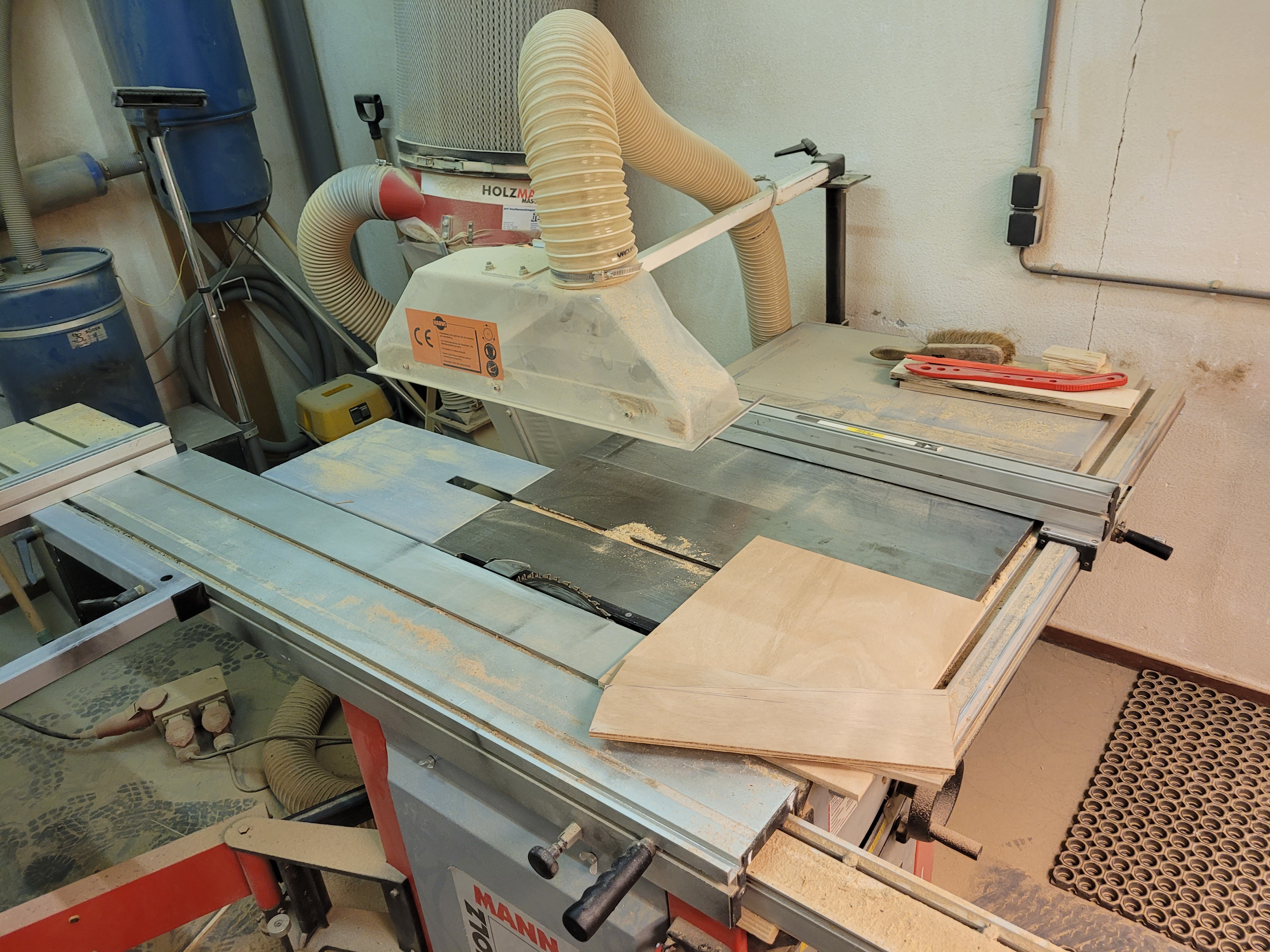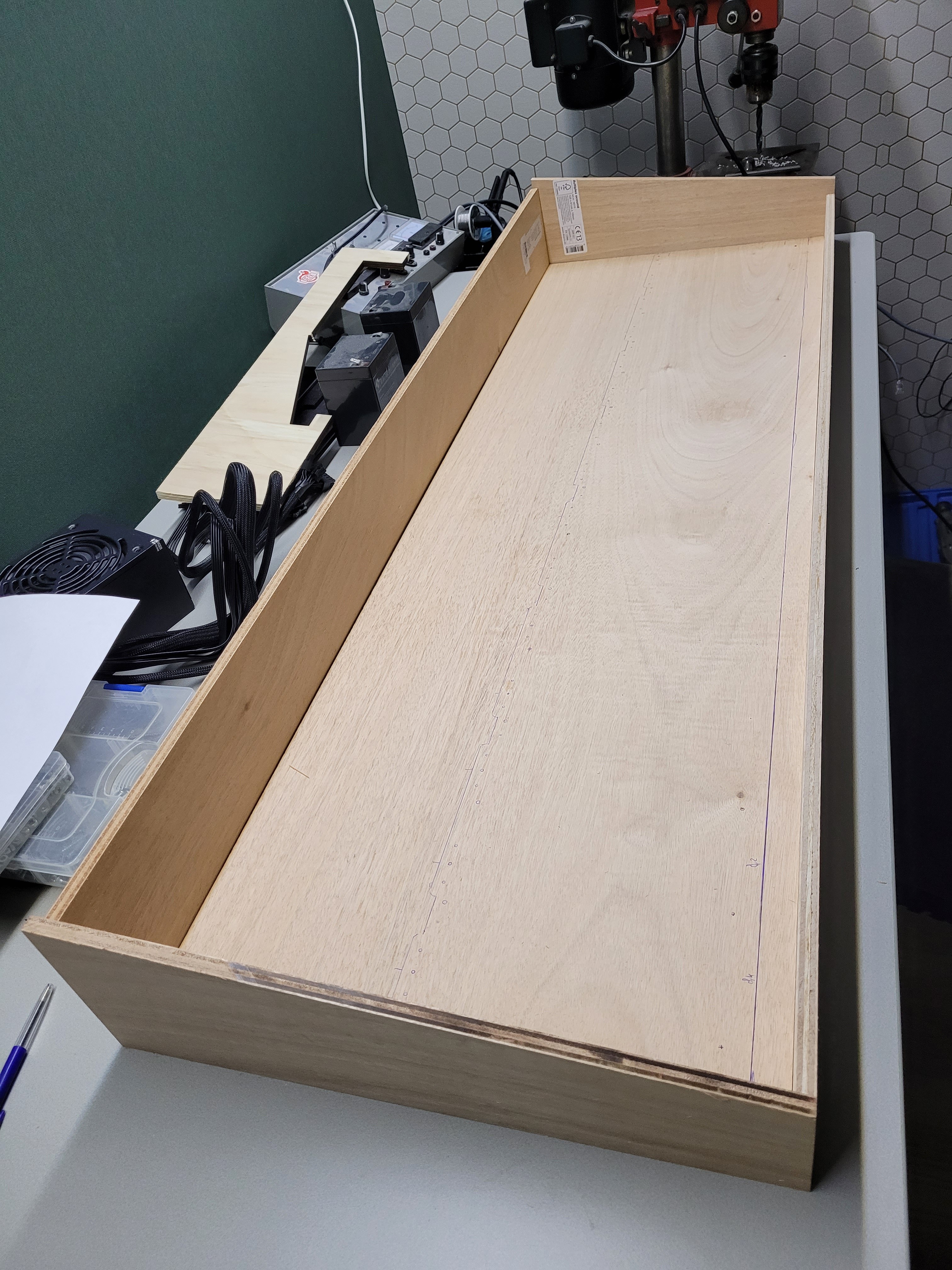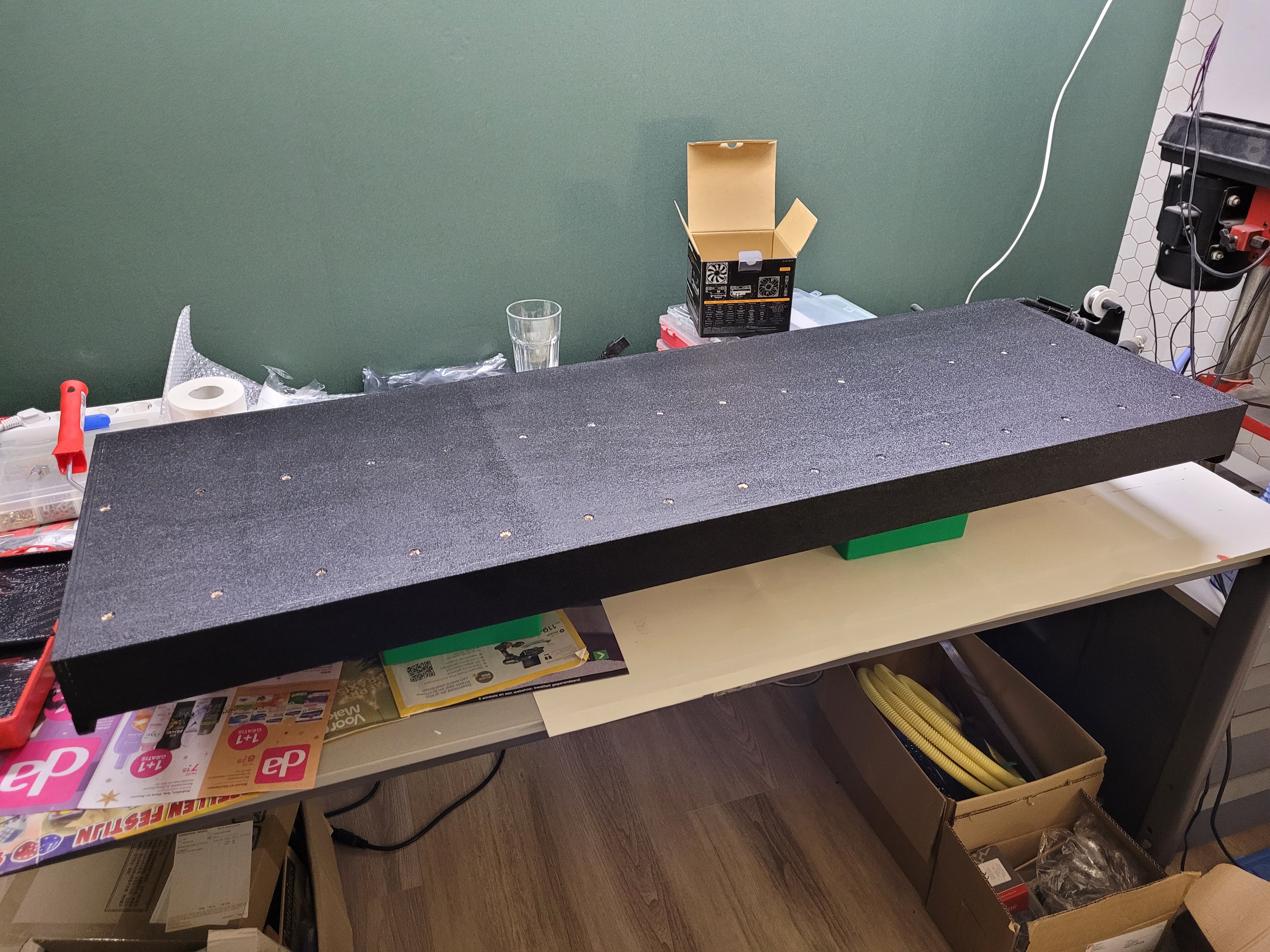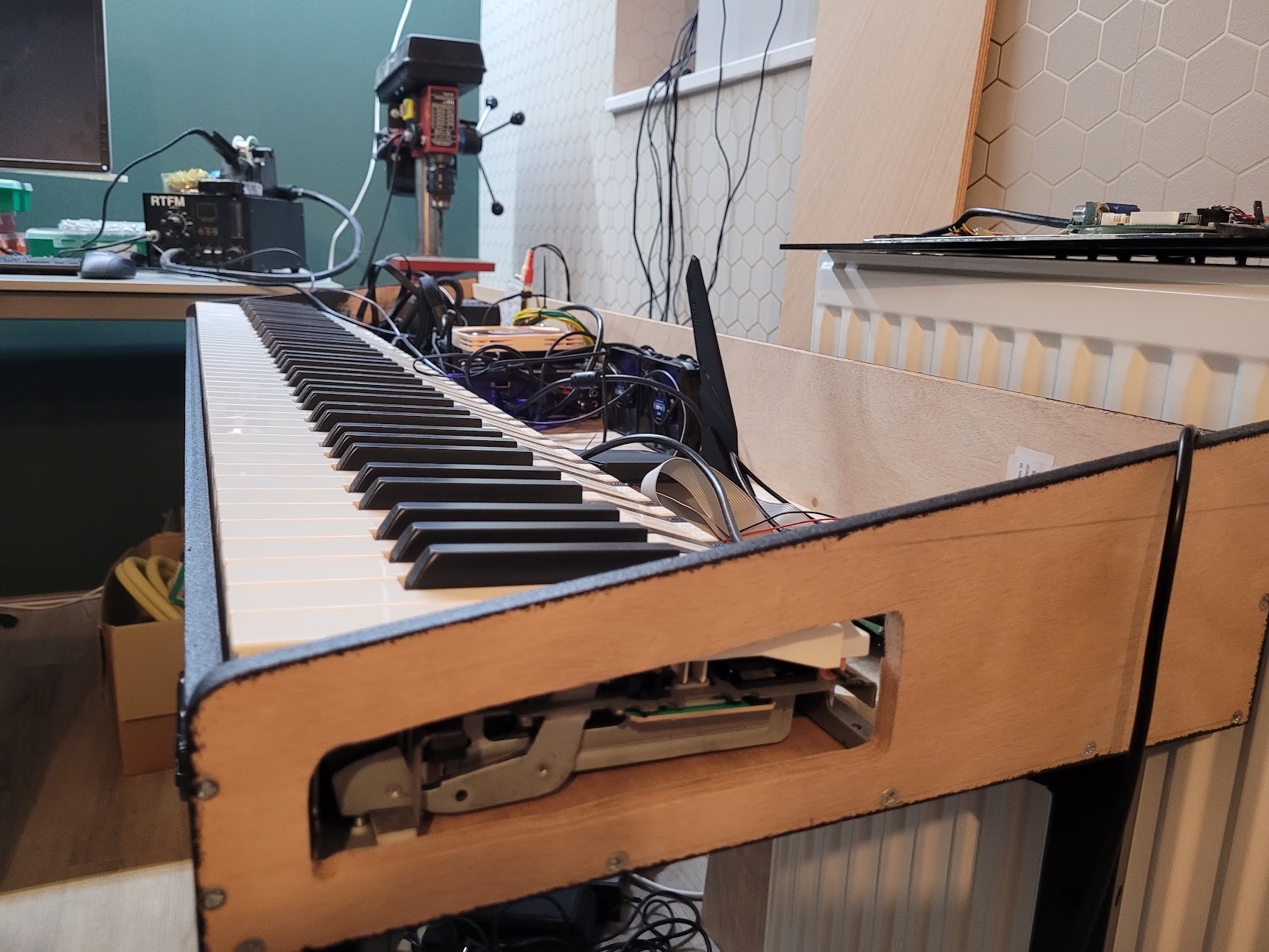After creating a preliminary 3D CAD sketch, I measured the precise dimensions of the cabinet by positioning the keybed and mini-ITX on the bottom plate.


The cabinet is constructed from plywood, coated with two layers of Warnex, a material commonly used for subwoofer cabinets. This method has proven to be much simpler than applying Tolex, which is often used for guitar amps.


The side panels feature a slot for easy access to the aftertouch strip. American walnut side panels are then securely attached to the multiplex side panels to give it a polished finish.
 Jan Bert
Jan Bert
Discussions
Become a Hackaday.io Member
Create an account to leave a comment. Already have an account? Log In.